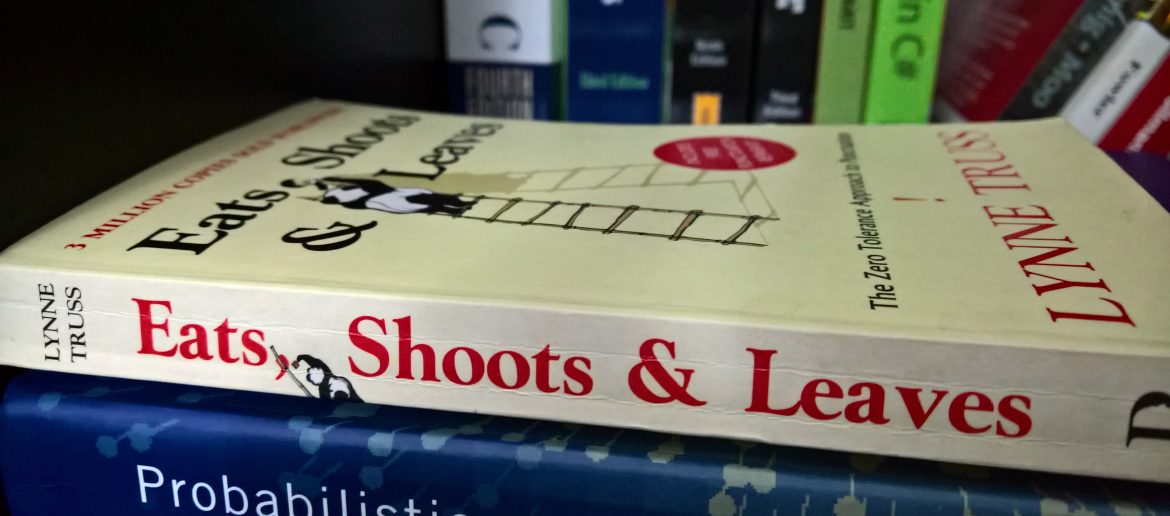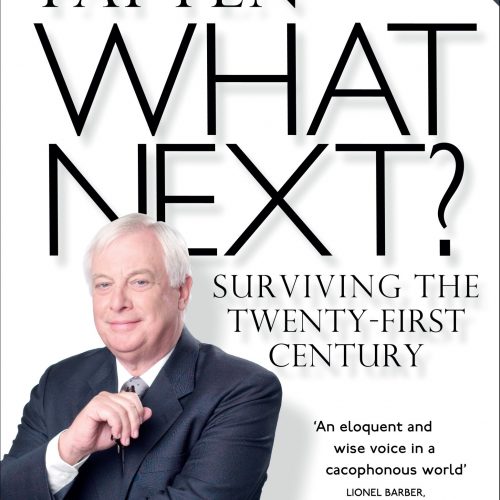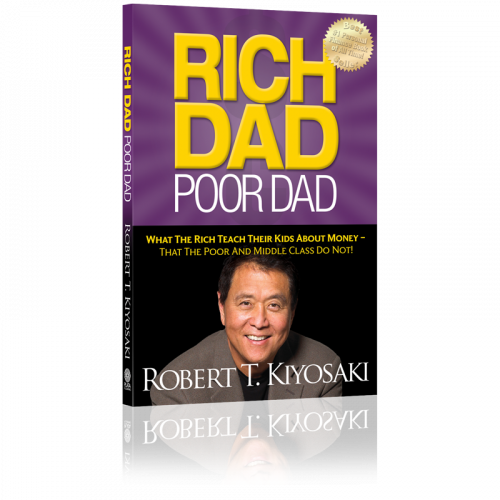Eats, shoots & leaves by Lynne Truss
It isn’t a book I would instinctively gravitate towards and therefore glad to have met an editor with a publishing house a few weeks ago, who suggested it, as a readable and practical choice; between the intimidating, encyclopaedia-sized Chicago Manual of Style and the few paged hand-out her firm has put together that just about skims the surface, on the tricky usage of apostrophes, commas, dashes, and other such punctuations.
For those who have crooned to the song What A Difference A Day Makes, you will be surprised that the common comma seems to make a lot more. For instance the difference with and without the comma in the title Eats, Shoots & Leaves is the difference, as the author points out, between a hardened hit-man and a cuddly black and white panda meandering along in a Chinese forest. It was indeed this analogy that made me sit up and take notice and to be sure, the book does not fail in elucidating the many elements of the comma, the apostrophe, the colon, and the semi-colon. The sections that cover these worthies definitely surpass the ones that cover simpler punctuations-the dash, the exclamation, the question-mark.
Not one fond of making comparisons, but having earnestly tried to study English Grammar textbooks and failed in part because of their sheer dullness, one has to say of Truss’ Eats, Shoots & Leaves that it is a book written lightly but not to be taken lightly.
If we see a twitter post making light of our poor vegetable vendor’s grammar and spelling, for full public display on his rate-card, it may be comforting (for lack of a better word) to know that he is not alone and that grocery stores in England-the grand old country whom we have to thank for the gift of this language-make similar mistakes. She quotes a banner she has seen standing at the local petrol station that says “Come inside for CD’s, VIDEO’s, DVD’s and Book’s.” Then, she rests her case for writing the book.
Whether you care deeply or not about words, whether you read them 110 to the minute or half thereof, there is a lot to learn from this book, on punctuation-which she has quoted as saying, “is a courtesy designed to help readers to understand a story without stumbling”.
In the book she says there are seventeen uses of the comma of which only three are popularly perceived: “in a list, before dialogue, and to mark out additional information”. The purpose of the book is not to educate on the use of the balance fourteen (of which she says even top grammarians are clueless), but to simply state that a comma is in fact not just a comma and we need to open our awareness to that!
That said, the author gives herself away, in her preoccupation with and fondness for the comma, that she has personified almost as a friendly pup. “Commas, if you don’t whistle at them to calm down, are unstoppably enthusiastic…”
More than the comma though, the most misused punctuation, as indicated in the dvd’s etc example above is the apostrophe and the author rightly assigns a substantial section The Tractable Apostrophe to this troublesome punctuation. According to the author, “The English language first picked up the apostrophe in the 16th century”. There is no question of doing away with it she suggests not just because of its long-standing presence but its indispensable quality. The top seven purposes of the apostrophe, she says in the book, are, to indicate a possessive in a singular noun; to indicate time or quantity (for the life of her she can’t get over how Warner Brothers got away with the movie title Two Weeks Notice instead of Two Weeks’ Notice); it indicates the omission of figures in dates; it indicates the omission of letters; it indicates strange, non-standard English (“If yer want ter be ‘ere, yo’ll non want me messin’ abaht a’ th’ time”); it features in Irish names such as O’Neill and O’Casey; and it indicates the plurals of letters and words.
“On the page, punctuation performs its grammatical function, but in the mind of the reader it does more than that. It tells the reader how to hum the tune”, she says. How can you not-after reading something like this-develop an appreciation for the punctuation.
The book is full of interesting trivia that endear you to it. She says for example that she once met someone who is doing a PhD in ellipsis (or three dots …) and that the upside-down question mark (which apparently can be found on Microsoft software, but, for the life of me, I couldn’t) was invented in the sixteenth century as a marker for a rhetorical question and that the interrobang (?!) that we see all the time on twitter was invented in 1962 to fully underline the expression when you say something like, “Where did you get that hat?!”
I would recommend this book, whether you work for a magazine, a newspaper, or a book publisher; even if you are not in a field where words are your tools, but are interested in sharpening your written communications; or, if you’re a book-worm just spending a lazy summer-holiday afternoon indoors and need a complement to all the action-packed fiction novels you’re reading.





Just out of curiosity, what's your reading rate? How many books per week?
Awesome, Malvika. Think will pick this up. And suddenly I'm wondering if I'm getting all my commas right!:)